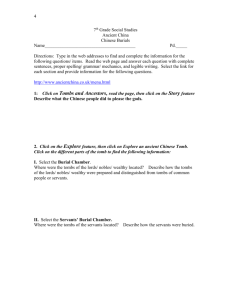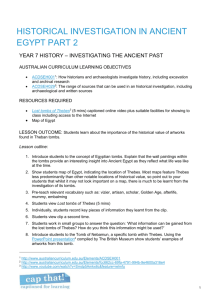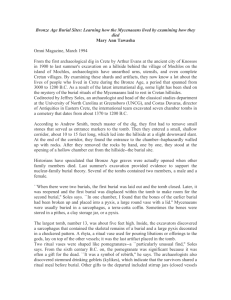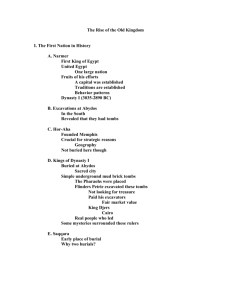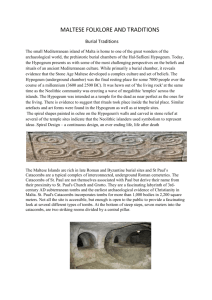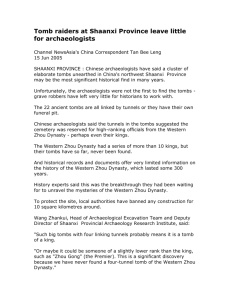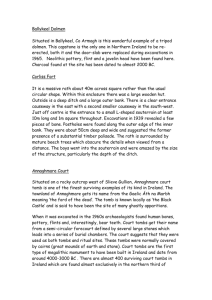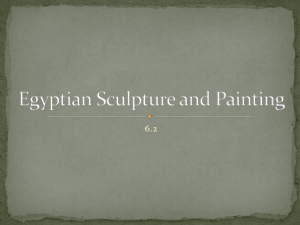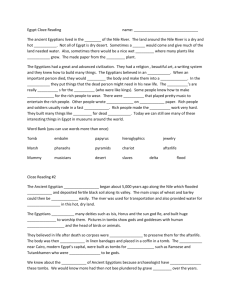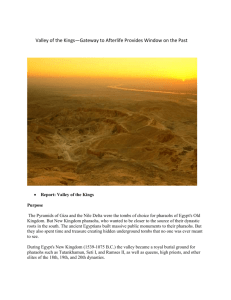The Tomb architecture in the West Pontic Greek Colonies
advertisement
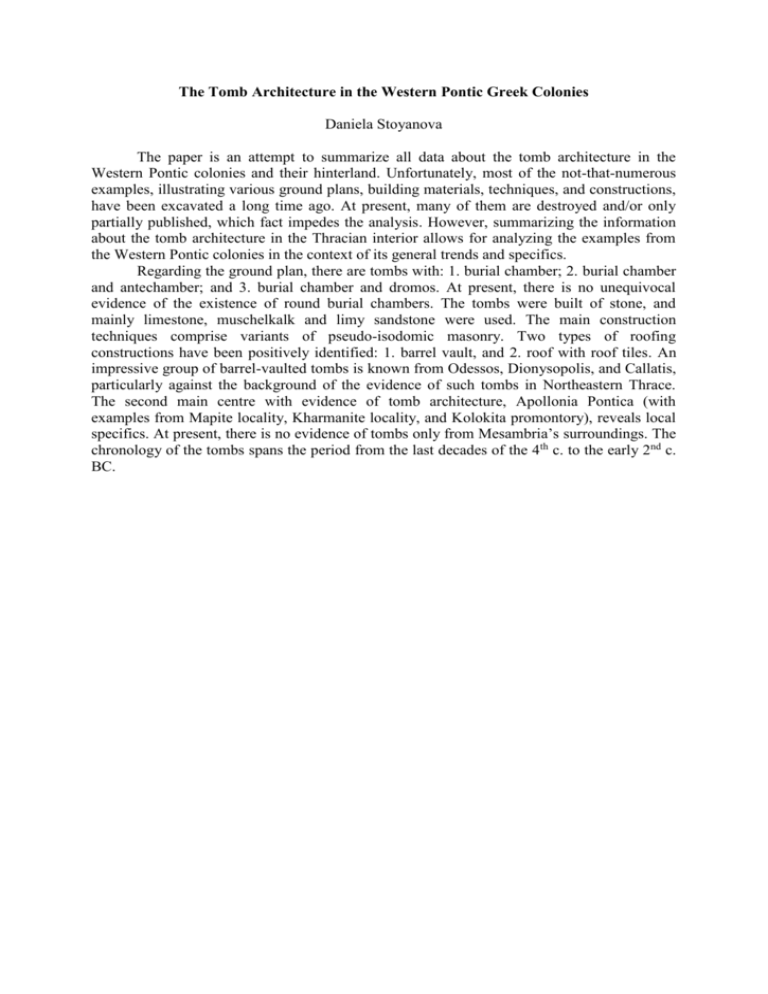
The Tomb Architecture in the Western Pontic Greek Colonies Daniela Stoyanova The paper is an attempt to summarize all data about the tomb architecture in the Western Pontic colonies and their hinterland. Unfortunately, most of the not-that-numerous examples, illustrating various ground plans, building materials, techniques, and constructions, have been excavated a long time ago. At present, many of them are destroyed and/or only partially published, which fact impedes the analysis. However, summarizing the information about the tomb architecture in the Thracian interior allows for analyzing the examples from the Western Pontic colonies in the context of its general trends and specifics. Regarding the ground plan, there are tombs with: 1. burial chamber; 2. burial chamber and antechamber; and 3. burial chamber and dromos. At present, there is no unequivocal evidence of the existence of round burial chambers. The tombs were built of stone, and mainly limestone, muschelkalk and limy sandstone were used. The main construction techniques comprise variants of pseudo-isodomic masonry. Two types of roofing constructions have been positively identified: 1. barrel vault, and 2. roof with roof tiles. An impressive group of barrel-vaulted tombs is known from Odessos, Dionysopolis, and Callatis, particularly against the background of the evidence of such tombs in Northeastern Thrace. The second main centre with evidence of tomb architecture, Apollonia Pontica (with examples from Mapite locality, Kharmanite locality, and Kolokita promontory), reveals local specifics. At present, there is no evidence of tombs only from Mesambria’s surroundings. The chronology of the tombs spans the period from the last decades of the 4th c. to the early 2nd c. BC.
